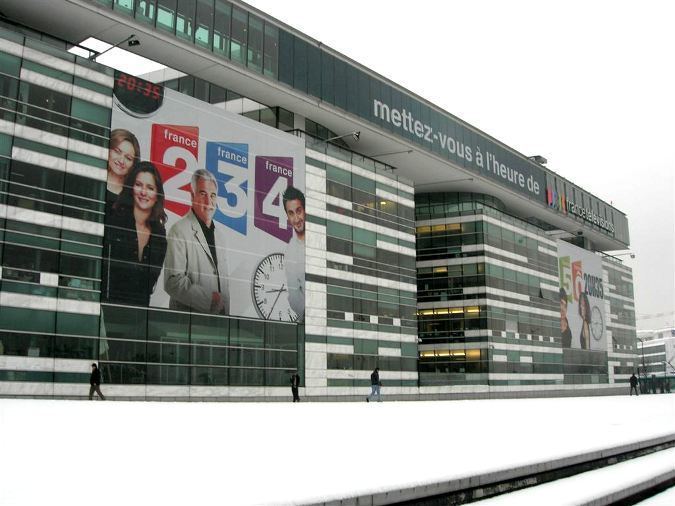Type Société anonyme Number of employees 11,400 Owner Government of France | Revenue €2,853 million Phone +33 1 56 22 60 00 Founded 1 August 2000, France | |
 | ||
Headquarters France Télévisions SA
7, esplanade Henri de France
75015 Paris
Eiffel Tower, Champ de Mars, 5 Avenue Anatole, 75007 Paris, France
7 Ligne 3 du tramway d'Île-de-France, 75015 Paris, France Key people Delphine Ernotte-Cunci: Chief Executive Officer
Patrice Duhamel: Vice-President and Director General of Broadcasting. Website www.francetelevisions.fr
www.francetvinfo.fr
www.francetv.fr Address 7 Esplanade Henri de France, 75015 Paris, France CEO Delphine Ernotte Cunci (22 Aug 2015–) TV shows Télématin, Tout le monde veut pren, Fort Boyard, Apocalypse: The Second, Walking with Dinosaurs Films produced Rust and Bone, A Monster in Paris, Elle, On the Road, The Past Profiles | ||
France Télévisions SA ([fʁɑ̃s televizjɔ̃]) is the French public national television broadcaster. It is a state-owned company formed from the integration of the public television channels France 2 (formerly Antenne 2) and France 3 (formerly France Régions 3), later joined by the legally independent channels France 5 (formerly La Cinquième), France Ô (formerly RFO Sat), and France 4 (formerly Festival).
Contents
France Télévisions is currently funded by the revenue from television licence fees and commercial advertising. The new law on public broadcasting will phase out commercial advertising on the public television channels (at first in the evening, then gradually throughout the day).
France Télévisions is a supporter of the Hybrid Broadcast Broadband TV (HbbTV) initiative (a consortium of broadcasting and Internet industry companies including SES, OpenTV and Institut für Rundfunktechnik) that is promoting and establishing an open European standard for hybrid set-top boxes for the reception of broadcast TV and broadband multimedia applications with a single user interface, and has selected HbbTV for its interactive news, sports and weather service, and plans to add catch-up TV and social media sharing capability.
History
From 1964 to 1974, French radio and television was monopolized through an organization known as the Office de Radiodiffusion Télévision Française. In an effort to stimulate competition, the organization was split in 1975 so that the France's three television channels—TF1, Antenne 2, and FR3, would still be owned by the French government, but be operated independently from each other. However, the privatization of TF1 in 1987 and increased competition from other new private broadcasters (such as Canal+ and La Cinq) led to a decline in viewership for the two remaining public channels, which lost 30% of their market share between 1987 and 1989. The channels were however saved when a single director-general was appointed to manage both Antenne 2 and FR3, becoming part of a joint entity known as France Télévision. They were renamed in 1992 as France 2 and France 3 respectively.
In August 2000, France Télévisions S.A. was formed as a holding company for France's public television channels, absorbing control of France 2, France 3, and fellow public channel La Cinquième (later renamed France 5). In 2004, Réseau France Outre-mer was absorbed by France Télévisions. Beginning in 2008, the President of France took the duty of naming the presidents for the French public broadcasters; they were previously nominated by the Conseil supérieur de l'audiovisuel.
National
Thematic
France Télévisions has an interest in a number of thematic cable/satellite channels in France:
France Télévisions holds 100% of France Télémusique SAS.
The thematic channel Planète Juniors (formerly Ma Planète) ceased operations in March 2009.
International
France Télévisions holds 45% of the ARTE France holding company together with the French state (25%), Radio France (15%) and INA (15%). ARTE France and ARTE Deutschland form the ARTE Consortium that manages the bilingual French-German channel (ARTE shared its analogue channel with France 5, but both channels have separate full-time services on cable, satellite and digital broadcasts).
France Télévisions also controls the new R1 digital multiplex that currently hosts France 2, France 3, France 5, Arte and La Chaîne parlementaire. France 4 was originally on the R1 multiplex but was moved to R2 to allow space for regional channels on R1.
